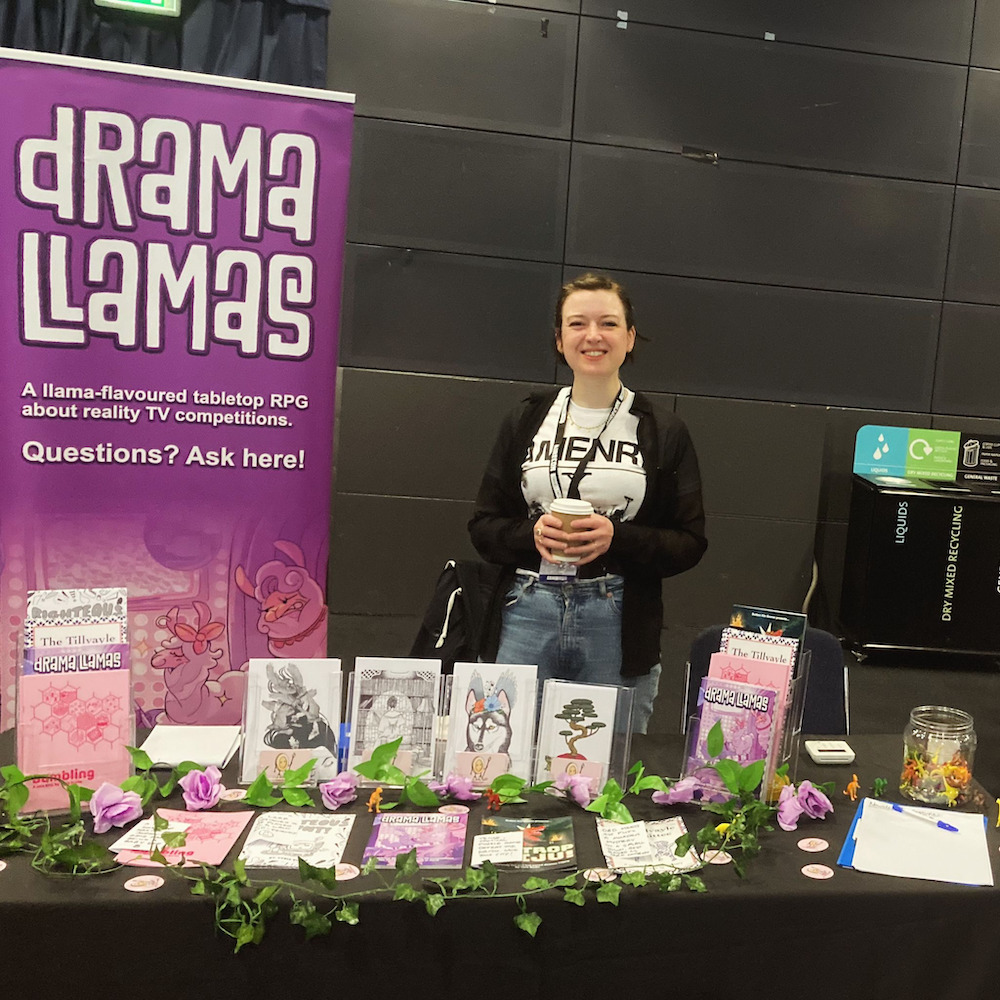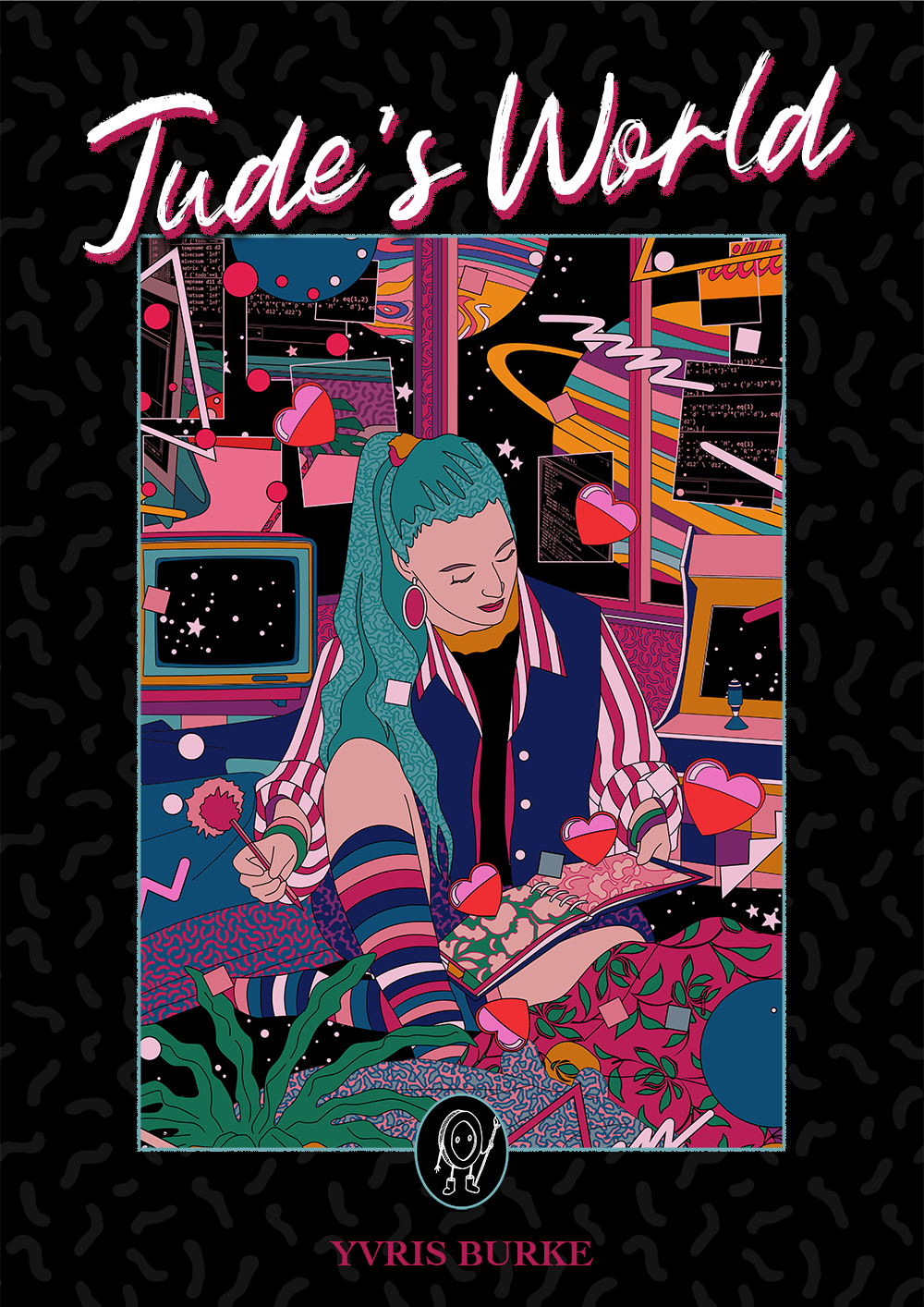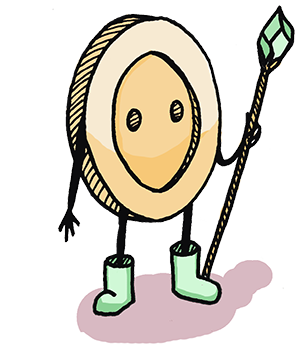Greetings festive friends! Are we merry and bright yet? No? Okay, I feel that. I was tempted to start this newsletter off by griping about what a bastard of a month December is, but I don’t think anyone needs that right now. So I won’t. I have a handful of good news nuggets that I’m determined to focus on instead. They’re not much, but they’re what we have until the return of the sun.

Airecon NW was lovely! If only a moderate success financially speaking. The organisers themselves admitted that attendance wasn’t what they’d hoped for (1k heads instead of 2k). There are a lot of potential reasons: train strikes, terrible weather, a clash with a Dungeons and Flagons weekender. The December of it all. But “the vibes” were good and I had many lovely, educational, and inspiring conversations. Welcome new subscribers! I hope your dinosaurs are doing well.
My main take away is this: for a small-time solo creator it’s worth doing a local convention or two for the experience, for the contacts, and for the morale boost of talking about your art face to face with people. All of which are much more better for the soul than shouting into the dank, stagnant social media well, praying you don’t wake the trolls sleeping within.
Drama Llamas accessories are now free! I realised while selling physical copies of Drama Llamas at the con that I had my digital cheat sheets and character sheets trapped behind a paywall. I can only apologise. If you’d like copies of those they’re now available to download for free on the Drama Llamas page.

Jude’s World has a cover! My in-development solo TTRPG in which a plucky preteen protagonist struggles to reunite their feuding parents now has cover art by the supremely talented Mega Asellia. Layout by myself. Really going for that 90s teen novella aesthetic. Speaking of which…
Development Diary: Jude’s World
This month I wanted to crack a couple of core mechanics that were notably missing from my first play test: the resolution for Jude’s parent traps and the tracking of their parents’ relationship over the course of the game, leading ultimately to an ending where they either get back together or… something else. I wanted two things from these mechanics, which I’ll talk through a bit.
Thing One: It should be difficult to get Jude’s parents back together
While it is possible to succeed, in most play throughs of this game players will have to accept that no amount of trapping and manipulating will reunite these two. People are complicated, relationships are hard, and mostly people break up for good and valid reasons. I have a related concern that it should be clear that this game aims to critique and deconstruct “parent trap” media rather than replicating it wholesale. The genesis of this project was, after all, my uncomfortable reaction to a piece in this genre. I want to make something messier, kinder, and a bit more true to life. A story that’s as much about the kid doing the trapping as it is about the parents being trapped.
Thing Two: If Jude’s parents don’t get back together that shouldn’t necessarily feel like a failure
Maybe they’re not back together but they are on better terms than when they started out? Maybe they’re still on bad terms but Jude has a better perspective on why that is? Maybe it’s not all “fixed”, just easier to process and navigate? It’s trite, but I’ll say it anyway: part of growing up is coming to see your parents as fallible, uniquely flawed human beings and then deciding what to do with that information. This is a coming of age story strongly themed on that common experience.
So, what mechanics did I go with? For the resolution of traps I wanted something simple with multiple, clearly bounded levels of success, failure, or a mixture of the two. So why not use 2d6 and a PbtA move-style resolution? Here’s a first draft:
6 or lower is a failure. Mark a Scar.
7-9 is a partial success. Choose an outcome:
- Mark one Heart and an Accomplice becomes a Foil
- Mark one Heart AND mark one Scar
- Mark no Hearts
12+ is an outstanding success. Mark 1 Heart and choose an additional outcome:
- A Foil becomes an Accomplice
- Remove one Scar
- Mark and additional Heart
And what are Hearts and Scars? Those are the measures I came up with for tracking the status of Jude’s parents’ relationship. Which I may rename at some point as I’m not 100% happy with them yet. They feel a bit obvious? Maybe that’s not such a bad thing? I continue to mull.
Hearts, unsurprisingly, represent the exes’ affection for each other, which can be platonic in nature, or romantic, or both. Scars represent the pain they’ve caused each other or the problems in their relationship; their anti-compatibility. I felt strongly that these needed to be two separate metrics. It feels important to acknowledge that you can care deeply for someone and still find that you can’t get along, or know that they’ve caused you too much pain for your romantic relationship to continue. Too many Scars gained will result in a big blow up, which then reduces both Hearts and Scars back to zero.
At the end of the game to get Jude’s parents back together you need to have maxed out their Hearts. Otherwise players are advised to look at the balance of Hearts and Scars to decide how things stand between them, coming up with their own nuanced take from Jude’s perspective. Because the end of the story you’re telling should ideally be about Jude, a young protagonist with their whole life ahead of them. What did they learn? How have they grown?
I’m keen to get around to play test 2 before I write to you all again. I have a week off over Christmas and no plans to go gallivanting (gone are the days…) so that should hopefully come to pass. Let me know in the comments if you have any questions you’d like answered in the next edition of the development diary?
Thanks for reading! If you want to hear from us monthly you can subscribe to the Button Kin newsletter. If you already subscribe and you're enjoying these posts, please tell your friends!

